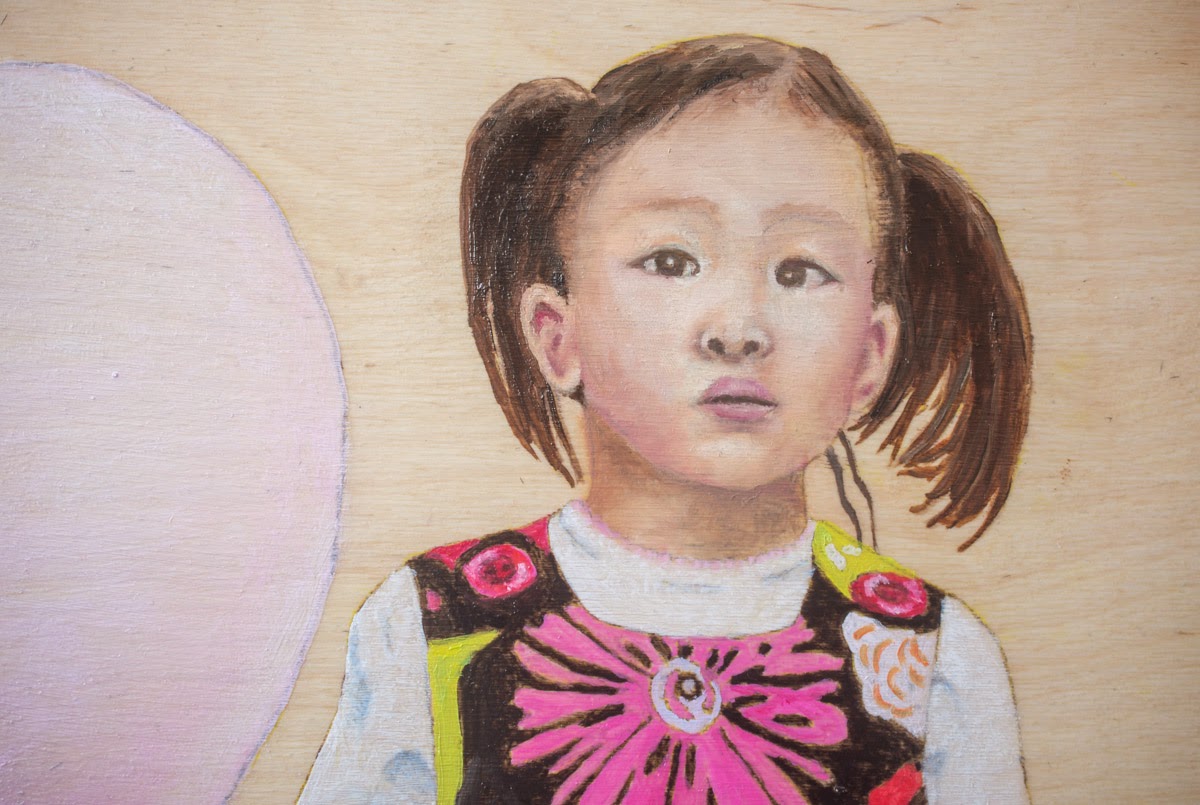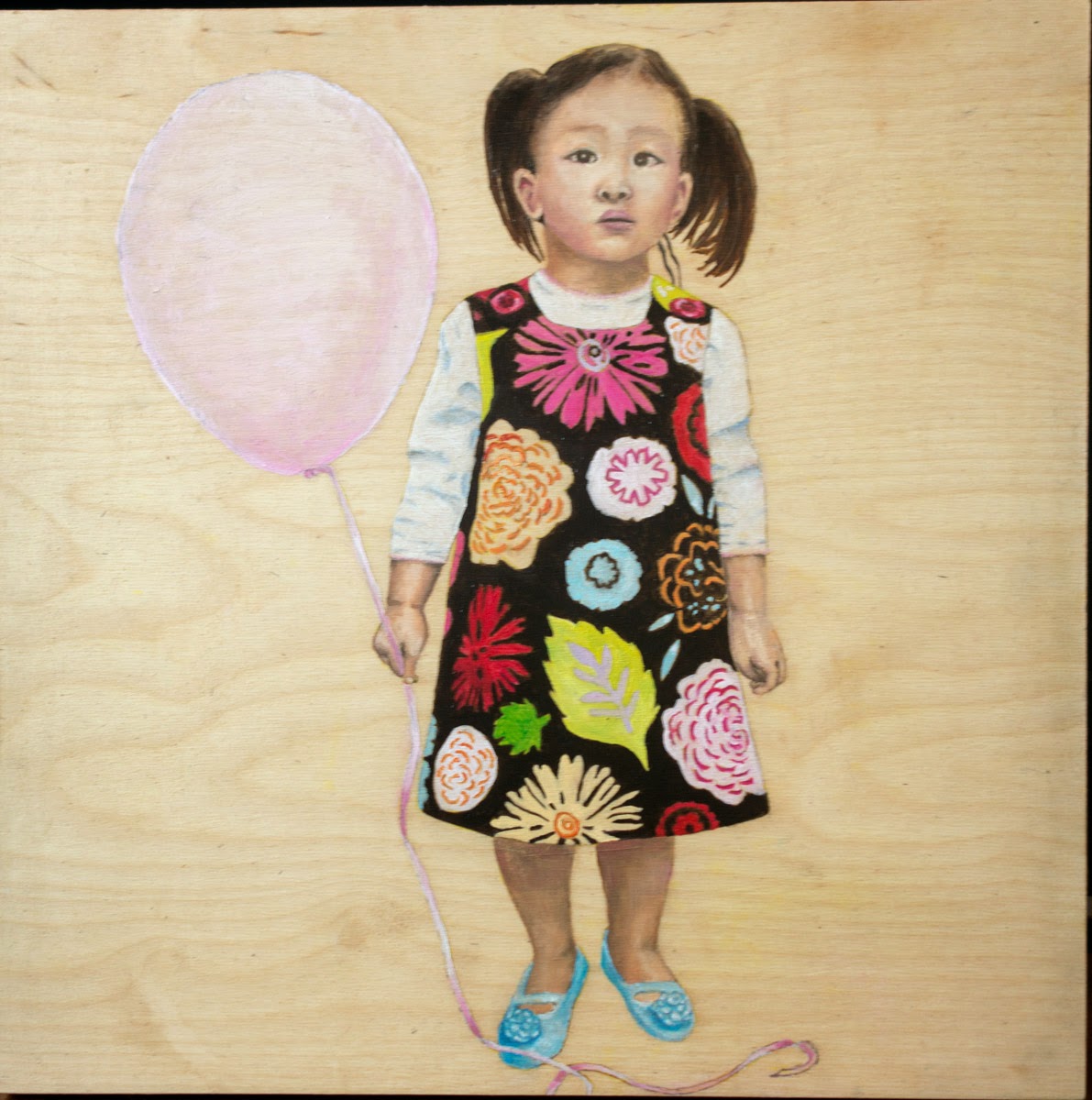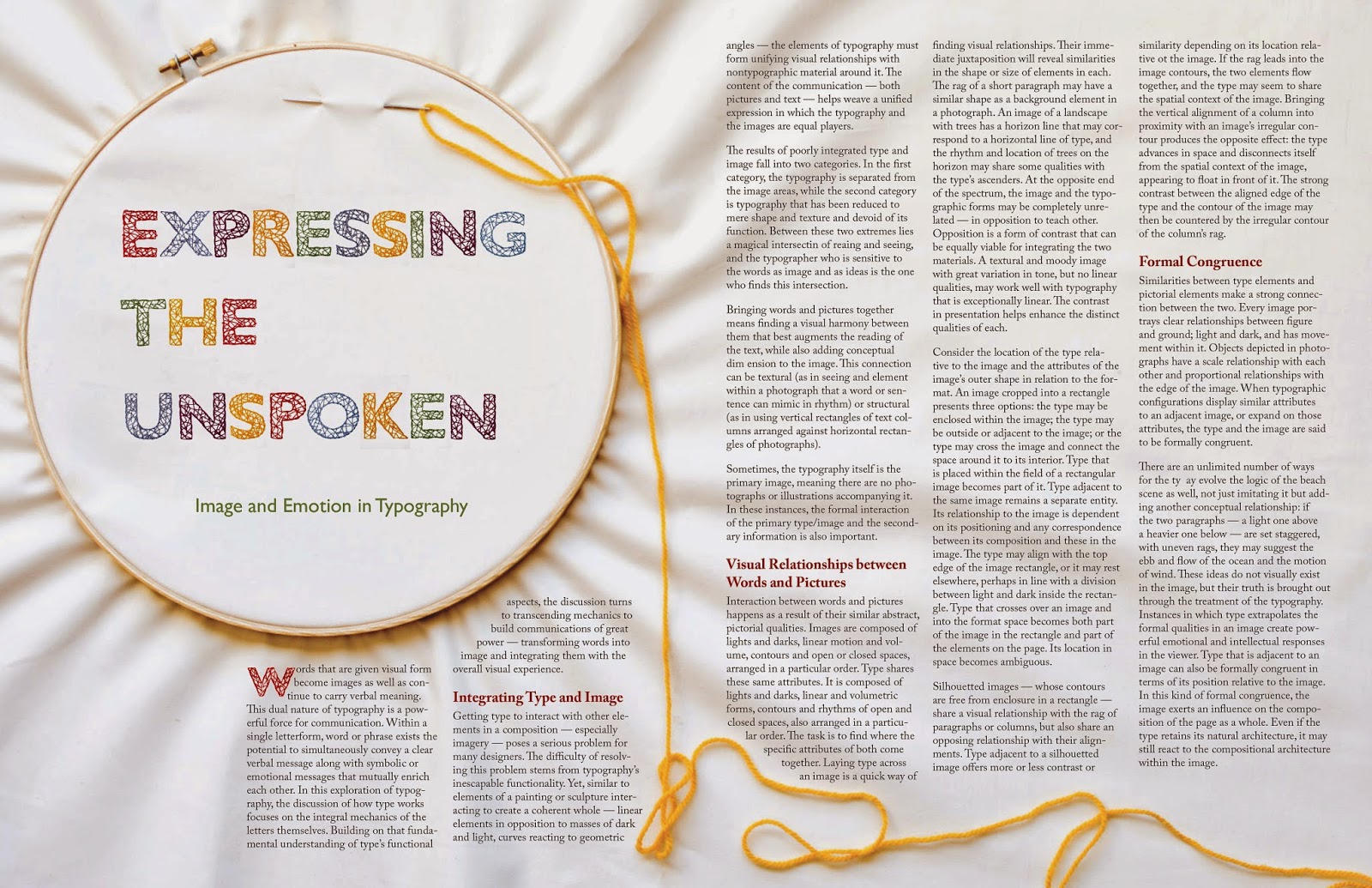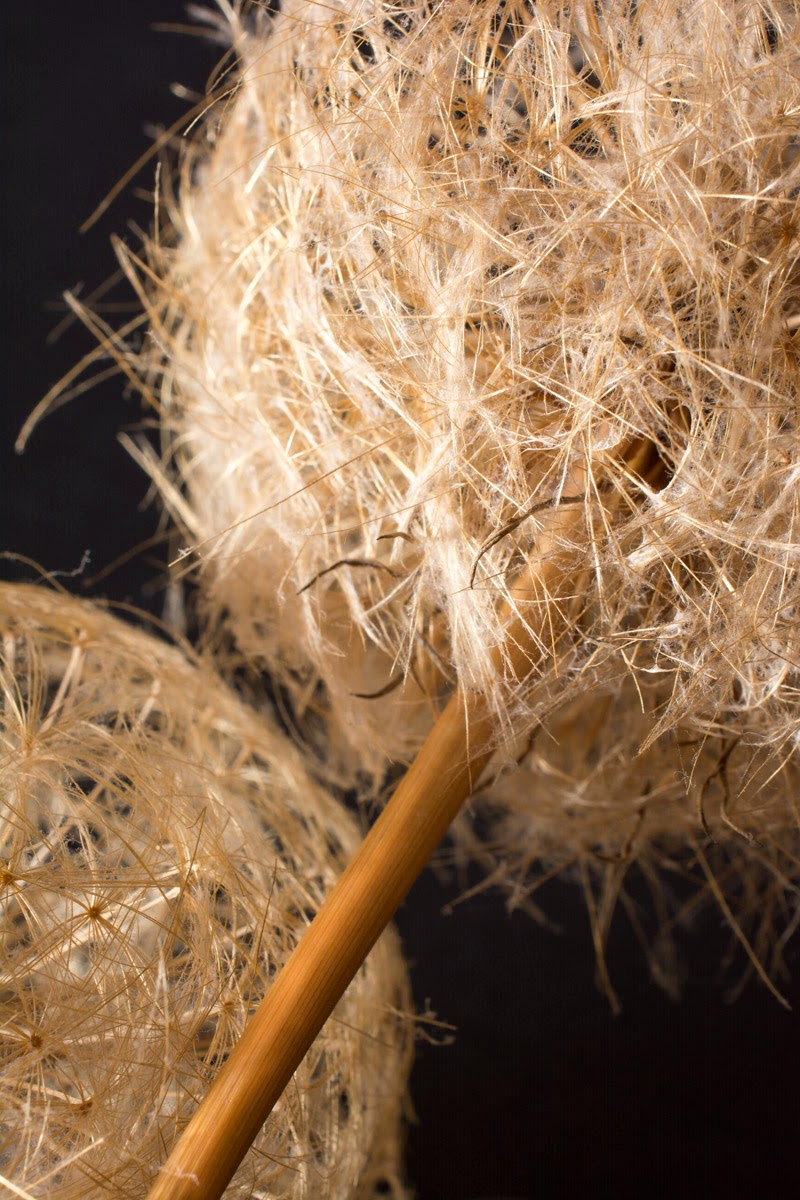Rationale
Typeface
The title is based on Gill Sans because I wanted to use a letterform with a thicker stroke. Picking a letterform with a thicker stroke gave me more room to work with when sewing the letters for the title. I used Adobe Caslon Pro for the headers instead of Gill Sans because I used a bold weight and the colour red. I felt this was enough contrast and using a completely different font was unnecessary.
I went with Adobe Caslon Pro for the body text primarily because I wanted a font that looked good with Gill Sans, was able to set it at a smaller type size, and maintained strong readability. Furthermore, I found that Adobe Caslon Pro has strong serifs and strokes which reflects the strong strokes used in Gill Sans.
Colour
I decided to have some fun with the colour choices in the layout, particularly with the title. I ended up going with two cool colours (green and blue), two warm colours (red and yellow) and one colour (purple) that is somewhere in between a cool and warm colour. In the photograph, I decided to go with the yellow for the thread running through the needle because I felt that yellow is a bright colour but not too bright as to distract the viewer’s eye from what was important. Instead I wanted to use the yellow thread to guide the viewer into the second page of the layout.
The rest of the composition is composed of a neutral colour as to not take away from the colours used in the title but, rather, to support them. Furthermore, I went with neutral colours because I felt they work best with the handmade letters and the body of the design.
Grid
I wanted to work around the strong shapes in the photograph in order to blur the boundary between image and text. As a result, I went with a three-column grid. I felt that line length in this grid enough to give me some flexibility to play with in managing the the shape of the text in relationship to the image. This is particularly true on the first page of the spread where I wanted to have the image shine but to not lose the ability to have a sufficient amount of text to not have it look awkward.
Image and Text
The overall concept for my design was to have the line between type and image blurred. It was very important to have the image and the text work together and to compliment each other. With that being said, the title of the spread is quite bold and does stand strong, particularly with the use of colour and texture created by the handmade letters juxtaposed against the neural background.
In regards to the title, I felt the line between text and image was more successful here. I hand sewed the letters and when I placed them into the spread on top of the material in the embroidery hoop the viewer is unable to figure out if the letters are embroidered into the material in the hoop or not. Visual element, such as the holes created by the stitches, increases the inability of the viewer to determine if the handmade letters are part of the photograph or not. As a direct result, this juxtaposition becomes part of the image and engaging part of the design.
Furthermore, with the use of the needle and thread, the eye is directed towards the main article, further enhancing the continuity of image working with text. For the image itself, I wanted to keep it neutral in order to not overpower the craftsmanship of the handmade letters and the yarn that was used throughout the layout.









